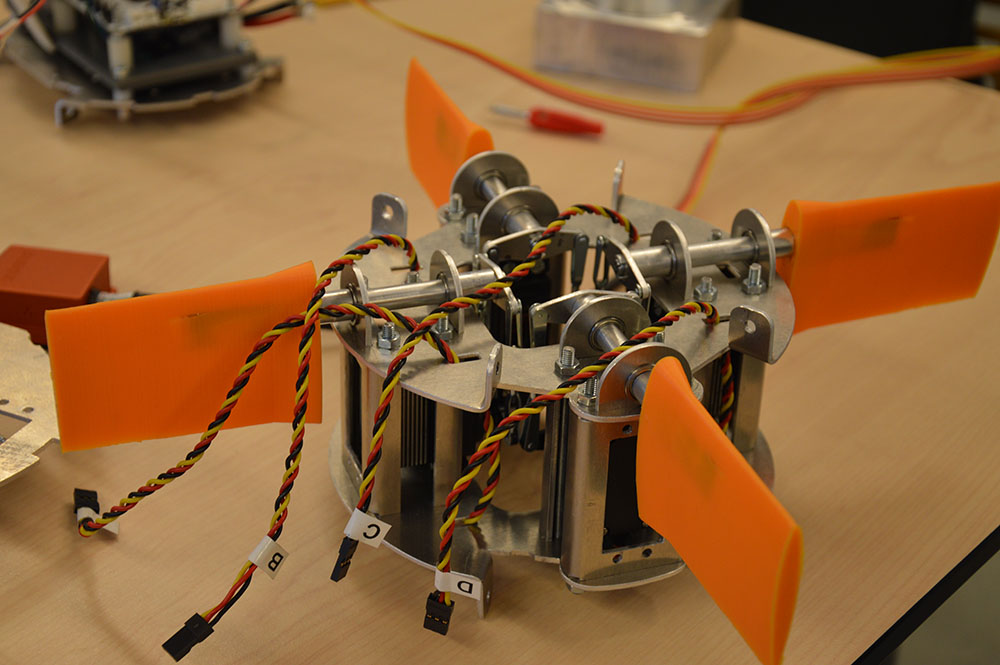
In the first weekend of April 2016, DARE will write history when they will launch the first actively stabilized rocket of the society.
The Advanced Control Team (ACT) started in September 2013 during the the minor 2013/14, requested by DARE, when 12 engineering students modified an existing DARE rocket and equipped it with a Stability Augmentation System (SAS), which resulted into a rocket which is actively stabilized, named the V7S. After the minor only 3 members continued the project, to work towards its first launch. The current team consists now of engineering students who are dedicated to: flight trajectory simulations, flight control software, electrical design, mechanical design, and aerodynamic design. This unique configuration of the team is essential to guarantee the success of such a complex rocket design.
Data analysis of the launch of Stratos II+ last October has shown that an active stabilization system can have a beneficial effect on the altitude that can be reached. For this reason, it is one of the key technologies that are developed within DARE.
Years of testing, improving and fine tuning the hardware and software of the rocket resulted that the V7S has reached its final shape. The flight computer of the V7S shows DARE’s state of the art electronic design. The onboard flight control software is a breakthrough in DARE technologies, as the students had to combine rocket flight dynamics with control theory on an embedded system, to ensure that the rocket can stabilize itself autonomously to maintain a stable flight path. The rocket makes use of four canards, which are small fins/canards at the nose of the rocket which generate a lift force just like an airplane does with its wings. This force is used to control the direction of the rocket, to make sure it will launch straight up. The mechanical design of the canard actuation system has been significantly upgraded since the minor. Now it has implemented a geared actuation system with 3D printed canards. All of these technologies combined make the V7S the flagship of DARE’s current R&D projects.
 The Canard system is currently being assembled into the rocket
The Canard system is currently being assembled into the rocket
In the past, the ACT performed a wind tunnel test at the facilities of the faculty of Aerospace Engineering in 2014 and 2 other launches in 2015 in the Netherlands. The previous launches were done with an existing DARE rocket, where the V7S attitude sensors (i.e. temperature, pressure, Inertial Measurement Unit) and the flight computer were integrated as payloads to test their behavior during flight. With the April 2016 launch campaign, the ACT will travel to Denmark where they will demonstrate active roll stabilization with the V7S. During flight, the roll rate of the rocket will be autonomously corrected, to prove the concepts of the flight computer, control software, and canard actuation system.
After a successful launch in April, the next launch which will follow within a couple of months will be used to demonstrate full active stabilization flight. The success of the 2016 ACT launch campaign will bring DARE into a new era of advanced rocketry, which is essential for future space flight. One of the next big projects for the ACT is project Aether, where the team will integrate an SAS which is capable to stabilize the rocket during supersonic flight.

One Response
Great to see the progress made by the ACT team, wish you all a wonderful launch this weekend!
Looking forward to the footage and data, I assume these will be published and discussed on the website later too?
Cheers,
Maarten
Comments are closed.